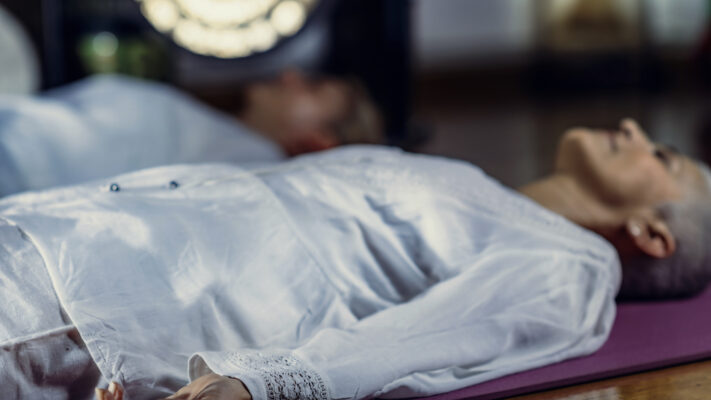The Birth of Mindfulness-Based Stress Reduction (MBSR)
Meet Jon Kabat-Zinn, a young and brilliant molecular biologist with a PhD from MIT in Boston. In the early seventies, Jon started exploring his spirituality through Buddhism, attending Zen retreats and studying with the likes of Jack Kornfield, Sharon Salzberg, and Joseph Goldstein. Not only was he a devout Buddhist, but he also had a love for yoga and martial arts like Aikido.
As Jon continued to delve into these practices, he began to see the powerful impact they had on reducing suffering. He realized that our minds play a big role in causing this suffering and that simply paying attention to our breath or our steps during activities like walking and sitting could ease this pain.

One day, during a retreat, Jon had a vision. He wanted to bring these practices to the masses, not just those who identify as Buddhists or spiritual seekers. So, he approached the University of Massachusetts hospital and was given permission to use their basement cafeteria for his first classes in 1979. He invited all the department heads to send him their toughest patients – those suffering from chronic diseases like cancer, depression, and insomnia – and taught them the simple, yet powerful techniques he’d learned.
And guess what? The patients got better. They learned to live with their symptoms, some of which even disappeared completely. Jon, being a researcher at heart, knew that he needed to conduct rigorous studies to prove the efficacy of these practices, and as word spread, MBSR gained popularity and recognition, eventually being featured in Bill Moyers’ “Healing and the Mind” series and detailed in Jon’s own book “Full Catastrophe Living.”
Fast forward to today, Mindfulness-Based Stress Reduction (MBSR) has evolved and adapted over the years, with meditators and researchers from around the world incorporating it into their own offerings. You could say that MBSR is the foundation for mindfulness classes in the West, with branches branching off into classes for specific conditions like depression, childbirth, and more…
Be Alive🌱,
❤ Love, Julia
Mindfulness and Therapeutic Mindfulness: What You Need to Know
Mindfulness and therapeutic mindfulness are topics that have gained much attention in recent years, and [...]
Mindfulness vs. Mind Fullness
Mindful vs Mind Full: What’s the Difference? We all want to live a blissful life, [...]
What is Mindfulness? A Frank Conversation
The Seed of Mindfulness Imagine yourself as a skilled gardener, nurturing a small seed nestled [...]
Beyond the Misconceptions: Debunking Myths About Mindfulness Meditation
Beyond the Misconceptions Despite common misconceptions, Mindfulness and Meditation is a valuable tool for enhancing [...]
GUIDED MEDITATIONS 💗
DISCLAIMER: The materials and the information contained on the Positive Pranic website are provided for general and educational purposes only and do not constitute any legal, medical, or other professional advice on any subject matter. None of the information on our videos is a substitute for a diagnosis and treatment by your health professional. Always seek the advice of your physician or other qualified health providers prior to starting any new diet or treatment and with any questions you may have regarding a medical condition. If you have or suspect that you have a medical problem, promptly contact your health care provider.






















